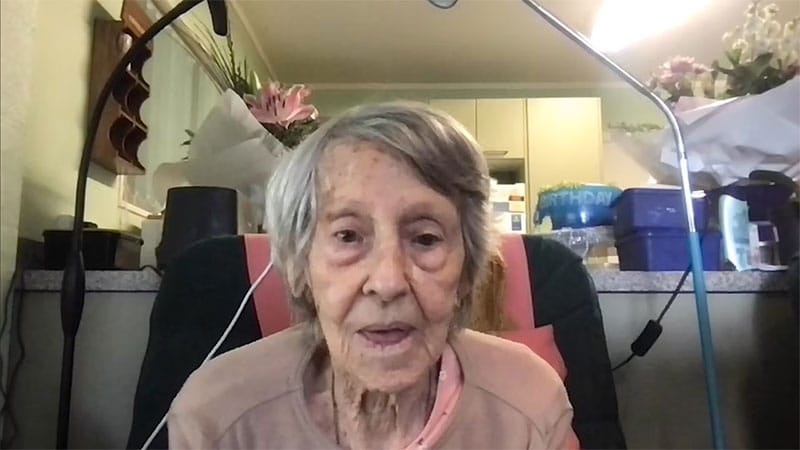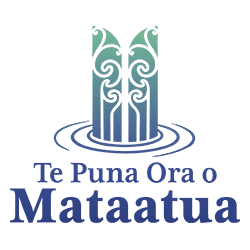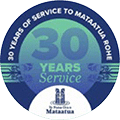Te Puna Ora o Mataatua has helped celebrate the life of its oldest Homebase Support client.
Emily Reid, who lives in Kawerau, marked her hundredth year on Saturday August 20 – becoming Te Puna Ora o Mataatua’s first Homebase Support and ACC client to reach their 100th birthday.
In honour of her special day, Te Puna Ora o Mataatua visited Emily at her home on Monday, August 22.

The team presented Emily with birthday flowers, gifts, a cake and even special birthday waiata sung and recorded by Te Puna Ora o Mataatua staff.

Homebase Support and ACC manager, Sally Mason says it was important to honour and acknowledge Emily’s birthday.
“This is such a special milestone, not many people reach this age and we wanted to share aroha and manaakitanga with both Emily and her whānau as we reflected on her life.”
The celebrations came on the back of a busy weekend, with friends and whānau travelling from near and afar, to celebrate Emily’s birthday at a special event in Rotorua.



Emily’s son, Colin Reid, says the day was memorable and a good way to come together as a whānau.
“It was great because the family are fairly spread out – some came from Australia and even as far as England to attend.
“It was good for everyone to get together again and meet up, otherwise you lose touch.”
Emily says a highlight for her was watching some of her many great grandchildren enjoying the day.
“I’m just lucky that I’ve reached 100, I’ve been blessed in regards to my health.”
Emily says her only challenge is her loss of vision.
“I can’t make out faces and it’s a struggle when it comes to remembering who I’ve met before.”
Despite this, Emily continues to live independently in a self-contained unit below her son’s house.
Emily receives in home care through Te Puna Ora o Mataatua’s Homebase Support and ACC Service, but she continues to cook and provide for herself in her own home.
Te Puna Ora’s Sally Mason says the entire organisation is proud of Emily.
“Together with support from her whānau and her Support Worker, she is a strong example of mana wahine as she continues to live independently in her whare.”
BIOGRAPHY:
Emily was born in London, England, four years after the end of World War I.
She grew up with her two brothers and two sisters, in a time when there was no electricity, and the family used gas lamps for lighting and coal ranges for cooking. It wasn’t until her teen years, when Emily’s family saw a radio come into their home.
Emily’s mother died young and it was her older sister that stepped up to help raise the family.
Before enlisting in the war, Emily recalls being trained in how to use a Gestetner Machine, which was an early printer/copier.
The Gestetner was a stencil method duplicator that used a thin sheet of paper coated with wax. It was written on with a special stylus that left a broken line through the stencil — breaking the paper and removing the wax covering. Ink was then forced through the stencil — originally by an ink roller — and it left its impression on a white sheet of paper below. The technology was a far cry from today’s computers and photocopiers!
It was during Emily’s time in the army where she learned how to drive.
After the war she was single and living with her younger sister. Later, when her sister was getting married, an Aunt suggested she live with them as it wouldn’t be suitable for a woman to live alone.
Emily didn’t want to stay with them as they argued and would stop talking to each other, she thought she would end up in the middle, so she decided to go to New Zealand House to enquire about emigrating to New Zealand, as they were looking for people with certain skills.
Emily didn’t tell any of her family about her plans, until she had confirmation that she qualified for free travel on “The Captain Cook” ship to New Zealand, so long as she stayed two years.
Her voyage on “The Captain Cook” brought more blessings than she could’ve expected, as it was where she met her future husband, John, on the ship.
The pair stayed in touch while working in Wellington, and got married about a year on from meeting.
Their time in Wellington was short-lived as John, who mainly worked outside, set his hopes on a better climate than Wellington’s wild wind and cold, wet, winters.
John set off for Auckland, travelling via Whakatāne to see someone. He liked the area and was even offered a job so the couple moved up to Whakatāne in early 1956.
Emily recalls when they first arrived in Whakatāne it was quite common to use horses for travel and there were hitching rails outside some of the shops in Kopeopeo.
Even in the early days, Kawerau still boasted some of the best house prices than surrounding areas in the Eastern Bay, and it was here that Emily and John chose to retire.
To this day Emily still remains in Kawerau, supported by her whānau and her support worker to live independently in her own self-contained unit below her son’s home.
Emily has three children who are currently living in Auckland, Whakatāne and Kawerau and all up she now has nine grandchildren and 16 great grandchildren.
When asked what her secret is to her lifelong strength and fortitude, Emily wishes she had the answer and gives the rest of the credit to her daily regimen of Garlic and Echinacea tablets.





